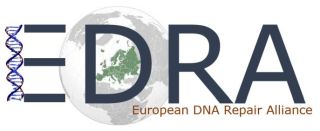|
|
|
Previous webinars > 14th EDRA Webinar - December 10th, 202414th EDRA Webinar December 10th, 2024, from 4:00 to 5:30 pm (CET) 
Martijn S. Luijsterburg - Keynote speaker Leiden University Medical Center (LUMC), Human Genetics Department, Leiden, The Netherlands STK19 facilitates the clearance of lesion-stalled RNAPII during transcription-coupled DNA repair Transcription-coupled DNA repair (TCR) removes bulky DNA lesions impeding RNA polymerase II (RNAPII) transcription. Recent studies have outlined the stepwise assembly of TCR factors CSB, CSA, UVSSA, and TFIIH around lesion-stalled RNAPII. However, the mechanism and factors required for the transition to downstream repair steps, including RNAPII removal to provide repair proteins access to the DNA lesion, remain unclear. Here, we identify STK19 as a TCR factor facilitating this transition. Loss of STK19 does not impact initial TCR complex assembly or RNAPII ubiquitylation but delays lesion-stalled RNAPII clearance, thereby interfering with the downstream repair reaction. Cryo-EM and mutational analysis reveal that STK19 associates with the TCR complex, positioning itself between RNAPII, UVSSA, and CSA. The structural insights and molecular modeling suggest that STK19 positions the ATPase subunits of TFIIH onto DNA in front of RNAPII. Together, these findings provide new insights into the factors and mechanisms required for TCR.
Edwige Belotti - short talk Institut NeuroMyoGène, Université Claude Bernard, Lyon, France H2A.Z is involved in premature aging and DSB repair initiation in muscle fibers Histone variants are key epigenetic players, but their functional and physiological roles remain poorly understood. Here, we show that depletion of the histone variant H2A.Z in mouse skeletal muscle causes oxidative stress, oxidation of proteins, accumulation of DNA damages, and both neuromuscular junction and mitochondria lesions that consequently lead to premature muscle aging and reduced life span. Investigation of the molecular mechanisms involved shows that H2A.Z is required to initiate DNA double strand break repair by recruiting Ku80 at DNA lesions. This is achieved via specific interactions of Ku80 vWA domain with H2A.Z. Taken as a whole, our data reveal that H2A.Z containing nucleosomes act as a molecular platform to bring together the proteins required to initiate and process DNA double strand break repair.
Michael Tellier - short talk University of Leicester, Department of Molecular and Cell Biology, Leicester, UK NELF regulates RNA polymerase II transcription termination to restrict transcription/replication conflicts Restriction of RNA polymerase II (RNAPII) activity to genes requiring transcription is essential to avoid deleterious interferences between the transcription machinery and other chromatin-associated processes. Here, we found via an auxin-inducible degradation approach that NELF-C, a component of the negative elongation factor complex (NELF) that promotes RNAPII pausing downstream of transcription start sites, is required for cell cycle transition into S phase. Mechanistically, an acute loss of NELF-C protein increases transcription elongation rate that perturbs RNAPII transcription termination, resulting in RNAPII transcribing into DNA replication initiation zones, a global accumulation of DNA damage, and cellular entry into quiescence. Altogether, our results reveal that NELF-C plays a key role in controlling RNAPII transcription activity and provide a potential role for NELF-C upregulation in colorectal cancers where it could restrict transcription/replication conflicts to promote cellular proliferation. |


